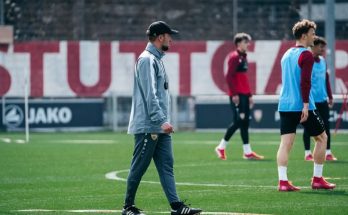In the world of women’s basketball recruiting, few stories resonate quite like that of elite twin prospects Mia and Mya Pauldo from Morris Catholic High School in Denville, New Jersey. Identical twins with a near-mythical on-court chemistry, the Pauldo sisters have been widely regarded as two of the most promising young talents in the nation. Their blend of skill, athleticism, and basketball IQ have earned them the attention of numerous top-tier college programs and even WNBA franchises. Yet, in a surprising turn of events, three prominent programs with the resources and platform to elevate their careers—the Tennessee Lady Vols, the Atlanta Dream, and Ole Miss women’s basketball—have each reportedly passed on the opportunity to recruit or sign the Pauldo twins.
This decision has stirred considerable discussion across recruiting circles, fans, and analysts alike, questioning what factors led these elite programs to reject two athletes seemingly destined for basketball stardom. The story of Mia and Mya Pauldo is compelling not only because of their undeniable talent but also because it underscores the complex calculus behind recruiting decisions in women’s basketball today.
Mia and Mya Pauldo have been on the radar since their freshman year at Morris Catholic, a program that itself has seen an uptick in national recognition thanks in large part to their presence. Standing at 5-foot-10 and 5-foot-11 respectively, both twins excel in multiple facets of the game. Mia’s quickness, court vision, and sharpshooting contrast yet complement Mya’s physicality, defensive intensity, and playmaking ability. Together, they form a dynamic duo capable of controlling games on both ends of the floor. Their stats are impressive: averaging over 18 points, 7 rebounds, and 6 assists per game, while maintaining high shooting percentages and low turnover rates. They have led Morris Catholic to deep runs in the state playoffs and garnered invitations to elite camps and all-star games, confirming their status as national prospects.
Despite these accolades, the decision by Tennessee, Atlanta, and Ole Miss to decline pursuing the Pauldo twins raises questions about the strategic priorities and philosophies of these organizations.
The Tennessee Lady Vols, long considered a bastion of women’s college basketball tradition, are currently in a period of rebuilding under a new coaching staff eager to reestablish the program’s national dominance. Tennessee’s recruiting approach is often conservative and deliberate, emphasizing size, positional needs, and immediate impact players who fit within their well-defined system. While Mia and Mya’s versatility is undeniable, some sources suggest the Lady Vols were cautious about how the twins’ style would mesh with Tennessee’s current roster and long-term plans. Additionally, there may have been concerns about positional overlap, as Tennessee already has committed guards and wings who play similar roles. The coaching staff may also have considered the team chemistry implications of adding twin players, which can be a unique dynamic in collegiate team sports. Though these are conjectures, they reflect the reality that recruiting decisions often go beyond pure talent evaluations and into fit, team culture, and long-term roster construction.
Similarly, the Atlanta Dream of the WNBA, who have shown increased interest in signing young, high-potential players directly from high school or post-junior college routes, surprisingly passed on the Pauldo twins. The Dream have been building a roster with a blend of veteran leadership and athleticism, and their scouts reportedly monitored the Pauldo twins closely. However, the Dream’s front office has emphasized a need for players with specific physical profiles and skill sets to balance their roster. While the twins are talented, the Dream may have perceived their development curve as requiring more seasoning at the college level before contributing professionally. Furthermore, WNBA franchises often weigh marketability and off-court factors alongside talent, and it’s possible the Dream’s management decided to allocate resources elsewhere based on projected roster needs and salary cap considerations.
Ole Miss women’s basketball, a program with recent strides in competitiveness within the Southeastern Conference (SEC), also opted not to pursue the Pauldo twins aggressively. Ole Miss has been focusing on players who can provide immediate scoring punch or defensive lockdown, particularly in the frontcourt. While the Pauldos offer versatility in the backcourt, Ole Miss’s coaching staff apparently prioritized size and experience, aiming to address gaps exposed during last season’s campaign. Recruiting priorities often shift based on the evolving makeup of a team and the specific goals for upcoming seasons. In this context, the Pauldo twins may have been viewed as longer-term projects rather than immediate contributors.
This triad of rejections is significant not only for what it says about the Pauldo twins’ recruiting journey but also for the broader landscape of women’s basketball recruiting. It highlights how elite prospects, even those with clear national profiles, are subject to a range of evaluations beyond talent alone. Recruiting staff must balance team needs, player development trajectories, chemistry, academic fit, and even marketability or public relations considerations. For twin players especially, coaches may factor in how their presence affects team dynamics, rotations, and individual growth.
Despite these setbacks, Mia and Mya Pauldo remain undeterred and continue to garner interest from other top programs and scouts. Many schools recognize the potential to develop a unique tandem who already have years of playing together and understanding each other’s tendencies instinctively. Their ability to create opportunities for teammates and adapt to various playing styles makes them valuable assets. Recruiting experts note that twins in basketball have historically been rare but impactful, with examples like the Lopez twins in the NBA and the Ogwumike sisters in the WNBA illustrating the power of sibling synergy on the court.
For the Pauldo twins, the journey ahead involves making strategic choices about where their talents will be nurtured best. Their story may yet evolve into one of resilience and eventual success, proving that initial rejections from prominent programs do not dictate the ultimate course of a player’s career. Many elite athletes have faced early doubts or mismatches in recruiting only to flourish spectacularly in environments that better fit their skills and aspirations.
In the meantime, Tennessee, Atlanta, and Ole Miss continue their own quests for excellence. Tennessee is rebuilding a powerhouse, Atlanta is crafting a championship-contending roster, and Ole Miss is seeking to break through in one of the toughest conferences in women’s college basketball. Their calculated decisions regarding the Pauldo twins reflect an intricate balancing act common to recruiting: weighing immediate impact against potential, team fit against individual talent, and long-term goals against short-term needs.
The case of Mia and Mya Pauldo underscores the unpredictable and often intricate nature of women’s basketball recruiting in 2025. For fans and analysts, it serves as a reminder that elite talent alone does not guarantee unanimous interest from every top program. For the twins themselves, it is a challenge and an opportunity to prove their worth on their own terms, inspiring young players everywhere with their dedication, skill, and determination.
As the 2025 recruiting cycle progresses, all eyes remain on Mia and Mya Pauldo to see which program ultimately secures their commitment and how they will impact the women’s basketball landscape moving forward. One thing is certain: their journey will be closely watched, their progress eagerly anticipated, and their story one that speaks to the complexities, challenges, and triumphs of aspiring basketball stars in a highly competitive environment.



